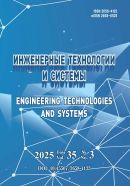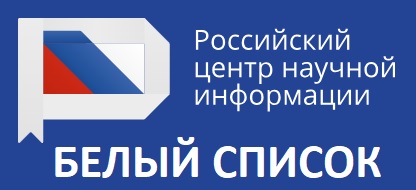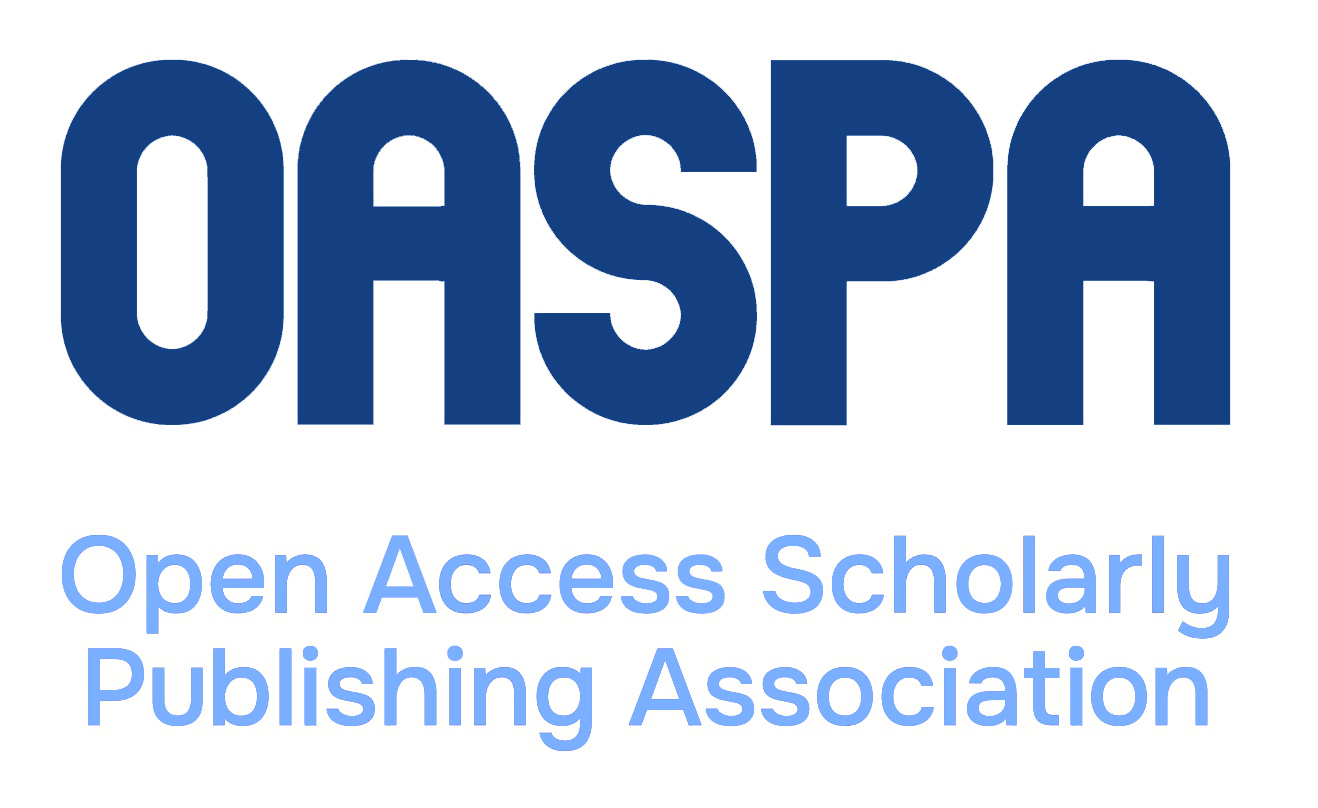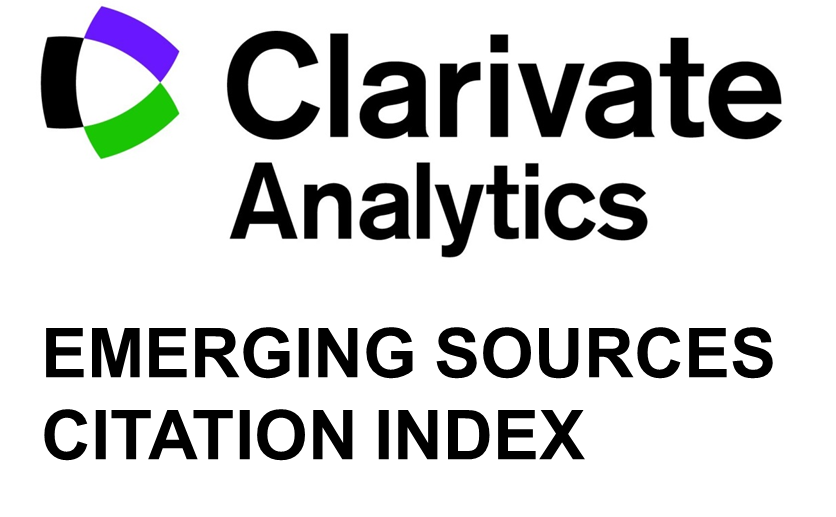DOI: 10.15507/2658-4123.035.202501.298-317
Results of the Study of Using the Experimental Sample of the Deep Ripper Tool on Overconsolidated Soil
Galina G. Parkhomenko
Cand.Sci. (Eng.), Leading Researcher of the Department of Plant Mechanization, Laboratory of Field Cultivation, Agrarian Research Center “Donskoy” (14 Lenin St., Zernograd 347740, Russian Federation), ORCID: https://orcid.org/0000-0003-1944-216X, Researcher ID: D-2633-2019, Scopus ID: 57211208305, SPIN-code: 6048-2834, This email address is being protected from spambots. You need JavaScript enabled to view it.
Igor V. Bozhko
Cand.Sci. (Eng.), Senior Researcher of the Department of Plant Mechanization, Laboratory of Field Cultivation, Agrarian Research Center “Donskoy” (14 Lenin St., Zernograd 347740, Russian Federation), ORCID: https://orcid.org/0000-0002-8423-4079, Researcher ID: E-9518-2016, Scopus ID: 57204682997, SPIN-code: 8506-5144, This email address is being protected from spambots. You need JavaScript enabled to view it.
Sergey I. Kambulov
Dr.Sci. (Eng.), Associate Professor, Chief Researcher of the Department of Plant Mechanization, Laboratory of Field Cultivation, Agrarian Research Center “Donskoy” (14 Lenin St., Zernograd 347740, Russian Federation), Professor of the Department “Technologies and Equipment for Processing Agricultural Products”, Don State Technical University (1 Gagarin Square, Rostov-on-Don 344003, Russian Federation), ORCID: https://orcid.org/0000-0001-8712-1478, Researcher ID: A-6156-2019, Scopus ID: 57204644631, SPIN-code: 3854-2942, This email address is being protected from spambots. You need JavaScript enabled to view it.
Nikita V. Buzhinsky
Postgraduate Student, Engineer of the Department of Plant Mechanization, Laboratory of Field Cultivation, Agrarian Research Center “Donskoy” (14 Lenin St., Zernograd 347740, Russian Federation), ORCID: https://orcid.org/0009-0004-8968-4337, SPIN-code: 4551-7297, This email address is being protected from spambots. You need JavaScript enabled to view it.
Abstract
Introduction. Under modern conditions, a serious problem for science and technology is increasing anthropogenic loads on the soil caused by agricultural machinery that leads to the soil consolidation. Soil overconsolidation occurs when there is a lack of organic matter and moisture. In the zone of insufficient moisture, the humus mineralization processes prevail over its formation process, so overconsolidation leads to an increase in the soil volume weight (soil density). One way to solve this problem is to use boardless deep rippers.
Aim of the Study. The aim of the study is to synthesize element and aggregate components of the deep ripper tool for high-quality soil cultivation.
Materials and Methods. Identifying the indicators of the technological process of the experimental sample of the tool for deep soil cultivation was carried out using standard and original methods of studying the soil breaking up quality indicators.
Results. The study has shown that with rods in the design of the tool, in terms of lumpiness, the lumps are concentrated mainly in the upper layer of the tilled layer (0...10 cm), and if there are no rods in the tool – in the lower layers (20...30 and 30–40 cm). Soil porosity as a function of density does not reach optimal values (over 50%) in the lower soil layers (37 and 32...33% at 20...30 cm; 31 and 34...35% at 30...40 cm for the backgrounds of disked stubble of cereals and autumn fallow, respectively).
Discussion and Conclusion. As a result of the study, it has been found realistic to equip the deep ripper tool with curved rods. It has been determined that the sweeps in the design of the tool must be installed not at a right angle to the rack in the transverse direction, but at an angle of soil chipping therefore land clearer is transformed into a chisel with gap expanders to improve the quality of cultivation and reduce energy costs. Improving the design of a deep ripper tool is also possible by increasing the angle of installation of the sweep to the furrow pan.
Keywords: deep ripper, tool, elemental and aggregate components, soil tillage quality indicators
Conflict of interest: The authors declare that there is no conflict of interest.
Funding: The work was carried out within the framework of State Assignment No. 0505-2022-0006 “Develop a methodology for resource conservation in the formation of machine technologies based on new machines and working bodies for the cultivation and harvesting of basic agricultural crops in conditions of insufficient and unstable moisture”.
Acknowledgments: The authors would like to thank anonymous reviewers.
For citation: Parkhomenko G.G., Bozhko I.V., Kambulov S.I., Buzhinsky N.V. Results of the Study of Using the Experimental Sample of the Deep Ripper Tool on Overconsolidated Soil. Engineering Technologies and Systems. 2025;35(2):298–317. https://doi.org/10.15507/2658-4123.035.202502.298-317
Authors contribution:
G. G. Parkhomenko – developing the study methodology; conducting the study, specifically performing the experiments and collecting the data; preparing the manuscript, specifically critical reviewing of the manuscript draft, commentaries or revisions at pre- or post-publication stages.
I. V. Bozhko – conducting the study, specifically performing the experiments; preparing the manuscript, specifically critical reviewing of the manuscript draft, commentaries or revisions at pre- or post-publication stages.
S. I. Kambulov – formulating the ideas, objectives and tasks of the study; oversighting and mentoring during planning and conducting the study.
N. V. Buzhinsky – conducting the study, specifically performing the experiments and collecting the data.
All authors have read and approved the final manuscript.
Submitted 19.12.2024;
revised 13.01.2025;
accepted 21.01.2025
REFERENCES
- Tsvetnov E.V., Makarov O.A., Strokov A.S., Tsvetnova O.B. The Role of Soils in Land Degradation Assessment: A Review. Eurasian Soil Science. 2021;54:441–447. https://doi.org/10.1134/S1064229321030169
- Sándor Z., Magdolna T., Kincses I., László Z., Kátai J., Vágó I. Effect of Various Soil Cultivation Methods on Some Microbial Soil Properties. DRC Sustainable Future. 2020;(1):14–20. Available at: https://clck.ru/3MHPLN (accessed 25.09.2024).
- Dzhabborov N.I., Dobrinov A.V. Optimal Designing of Tillage Machines with Due Account for Their Required Power. AgroEcoEngineering. 2021;(1):50–62. (In Russ., abstract in Eng.) https://doi.org/10.24411/2713-2641-2021-10277
- Kuvayev A.N. Determination of the Specific Soil Resistance Using Deep Subsurface Tillage in Conditions of Northern Kazakhstan. Tractors and Agricultural Machinery. 2020;87(4):45–52. (In Russ., abstract in Eng.) https://doi.org/10.31992/0321-4443-2020-4-45-52
- Andreev V.L., Dyomshin S.L., Ilichev V.V., Noskova E.N., Popov F.A. Evaluation of the Efficiency of Work of the Basic Model of Multifunctional Tillage Unit. Bulletin of NGIEI. 2019;(5):34–47. (In Russ., abstract in Eng.) Available at: https://clck.ru/3MHRQ5 (accessed 25.09.2024).
- Jabborov N.I., Dobrinov A.V., Saveluev A.P. Modeling of the Tillage Process by the Method of Stress Concentration in the Tilled Layer. Engineering Technologies and Systems. 2023;33(2):175–191. (In Russ., abstract in Eng.) https://doi.org/10.15507/2658-4123.033.202302.175-191
- Khazov I.E., Rakhimov I.R., Rakhimov R.S., Alyabiev V.A. Development of a Vibratory Working Organ of a Subsoiler. Bulletin of the South Ural State University. Series “Mechanical Engineering Industry”. 2024;24(2). (In Russ., abstract in Eng.) https://doi.org/10.14529/engin240204
- Dzhabborov N.I., Dobrinov A.V. Validation of the Design Parameters of the Tillage Tool Developed for Soil Loosening and Clean Weeding in Organic Farming. Vestnik of Voronezh State Agrarian University. 2022;15(1):23–33. (In Russ., abstract in Eng.) https://doi.org/10.53914/issn2071-2243_2022_1_23
- Dobrinov A.V., Dzhabborov N.I., Chugunov S.V. Comparative Assessment of the Efficiency of Working Parts for Soil Treatmentand Destruction of Weeds. Izvestia of the Lower Volga Agro-University Complex. 2022;(2):465–480. (In Russ., abstract in Eng.) Available at: https://clck.ru/3MHuzr (accessed 29.10.2024).
- Akhalaya B.Kh., Shogenov Yu.Kh., Mironova A.V., Zolotarev A.S. Multi-Operational Tillage Unit. Agricultural Engineering. 2022;24(4):28–31. (InRuss., abstract in Eng.) https://doi.org/10.26897/2687-1149-2022-4-28-31
- Demshin S.L., Zyryanov D.A., Andreev V.L, Ilyichev V.V. Research Results on Determining a Rational Design Scheme of a Multifunctional Tillage Unit. Perm Agrarian Bulletin. 2020;(3):13–23. (In Russ., abstract in Eng.) https://elibrary.ru/nhhgft
- Shahgoli G., Kanyawi N., Kalantari D. Modeling the Effects of Narrow Blade Geometry on Soil Failure Draughtand Vertical Forces Using Discrete Element Method. Yuzuncu Yıl University Journal of Agricultural Sciences. 2019;29(1):24–33. https://doi.org/10.29133/yyutbd.429950
- Bagirov G.S., Alekperov Kh.T., Aliyev Kh.Z., Gamanov R.N., Huseynov A.G. Optimal Parameters of Flat Cutter– Deep Shorecutter. Gornoe Sel’skoe Khozyaistvo. 2022;(5):9–15. (In Russ., abstract in Eng.) https://doi.org/10.25691/GSH.2022.5.002
- Shvabauer Yu.A., Subbotin S.I., Gapich D.S., Fomin S.D. Experimental Installation for the Study of a Chisel Unit Equipped with Working Bodies with Improved Geometric Characteristics. Izvestia of the Lower Volga Agro-University Complex. 2024;(2):394–406. (In Russ., abstract in Eng.) Available at: https://clck.ru/3MHxRi (accessed 29.10.2024).
- Kuzychenko Yu.A., Katkov K.A. Technological Indicator of the Work of the MTU During Tillage in the Conditions of the Pre-Caucasus. Izvestia Orenburg State Agrarian University. 2022;(2):134–138. (In Russ., abstract in Eng.) https://doi.org/10.37670/2073-0853-2022-94-2-134-138
- Borisenko I.B., Dotsenko A.E., Borisenko P.I., Novikov A.E. Chizeling: Advanced Tools and Harvesting Methods in Wide Row Crops. The Agrarian Scientific Journal. 2015;(7):41–45. (In Russ., abstract in Eng.) https://elibrary.ru/ubotqj
- Pavlyuchenko G.V., Sadov R.I. Optimization of Tillage Unit Parameters in Steppeand Forest-Steppe Regions of the Altai Territory. Bulletin of Altai State Agricultural University. 2021;(3):126–130. (In Russ., abstract in Eng.) Available at: http://vestnik.asau.ru/index.php/vestnik/article/view/175 (accessed 25.10.2024).
- Romanuk N.N., Nukeshev S.O., Toigambaev S.K., Telovov N.K. [An Original Subsoiler for Improving the Properties of the Fertile Soil Layer]. Vestnik Kurskoi Gosudarstvennoi Sel’skokhozyaistvennoi Akademii. 2014;(2). (In Russ.) Available at: https://clck.ru/3MJ2iC (accessed 29.10.2024).
- Rashidov T.R., Djuraeva N.B., Urinov A.P. Modeling the Process of Strain and Motion of the Soil in a Subsoiler Operation Area. Tomsk State University Journal of Mathematics and Mechanics. 2021;(73):81–94. (In Russ., abstract in Eng.) https://doi.org/10.17223/19988621/73/8
- Chumakov V. G., Kopylenko L. Yu. Ways of Fight Against Soil Consolidation. Vestnik of the Kurgan State Agricultural Academy. 2014;2(10):65–67. (In Russ., abstract in Eng.) Available at: https://clck.ru/3MJ3Z5 (accessed 29.09.2024).
- Petrovets V.R., Kurzenkov S.V., Dudko N.I., Grekov D.V. [Mathematical Model of the Arable Soil Layer as a Continuous Bulk Medium, Compressibleand Capable of Self-Organization During its Processing]. Bulletin of the Belarusian State Agricultural Academy. 2017;(4):160–163. (In Russ.) Available at: https://clck.ru/3MJ3on (accessed 29.10.2024).
- Zinchenko S.I., Zinchenko V.S. Formation of the Plough Soleat Various Methods of the Main Processing of the Grey Forest Soil. Vladimir Agricolist. 2015;(1):2–6. (In Russ., abstract in Eng.) Available at: https://clck.ru/3MJ4cn (accessed 29.10.2024).
- Gromovik A.I., Gorbunova N.S. Formation of the Tillage Pan Bottom Horizon in Black Soils and its Sorption Features with Respect to Organic Matter and Heavy Metals. Sorption and Chromatography Processes. 2022;22(6):877–884. (In Russ., abstract in Eng.) https://doi.org/10.17308/sorpchrom.2022.22/10894
- Plisko I.V. The Manifestation of Physical Degradation on Arable Lands in Ukraine (the Literary Review). Soil Scienceand Agrochemistry. 2016;(2):141–153. (In Russ., abstract in Eng.) Available at:http://aw.belal.by/russian/science/soilandagro_pdf/57/57-14.pdf (accessed 29.10.2024).
- Andreeva O.V., Kust G.S. Is it Possible to Achieve Sustainable Land Management on Land Affected by Erosion: Issues of Modeling Options. Lomonosov Soil Science Journal. 2024;79(3):38–48. (In Russ., abstract in Eng.) https://doi.org/10.55959/MSU0137-0944-17-2024-79-3-38-48
- Belts A.F., Guzenko K.E. Improvement of the Functional Layouts of Multifunctional Soil-Cultivating Sowing Units. Tractors and Agricultural Machinery. 2024;91(4):421–429. (In Russ., abstract in Eng.) https://doi.org/10.17816/0321-4443-321846
- Boykov V.M., Startsev S.V., Pavlov A.V., Okas K.K. Rational Technology of Subsoil Tillage. The Agrarian Scientific Journal. 2017;(2):44–46. (In Russ., abstract in Eng.) Available at: https://agrojr.ru/index.php/asj/article/view/31/26 (accessed 29.10.2024).
- Bobkov S.I., Astafiev V.L. Tool for Crushing Green Manure on the Soil Surface in Organic Farming Technology. Agricultural Technologies. 2019;1(1). (In Russ., abstract in Eng.) Available at: https://clck.ru/3MJ9iy (accessed 29.10.2024).

This work is licensed under a Creative Commons Attribution 4.0 License.

















